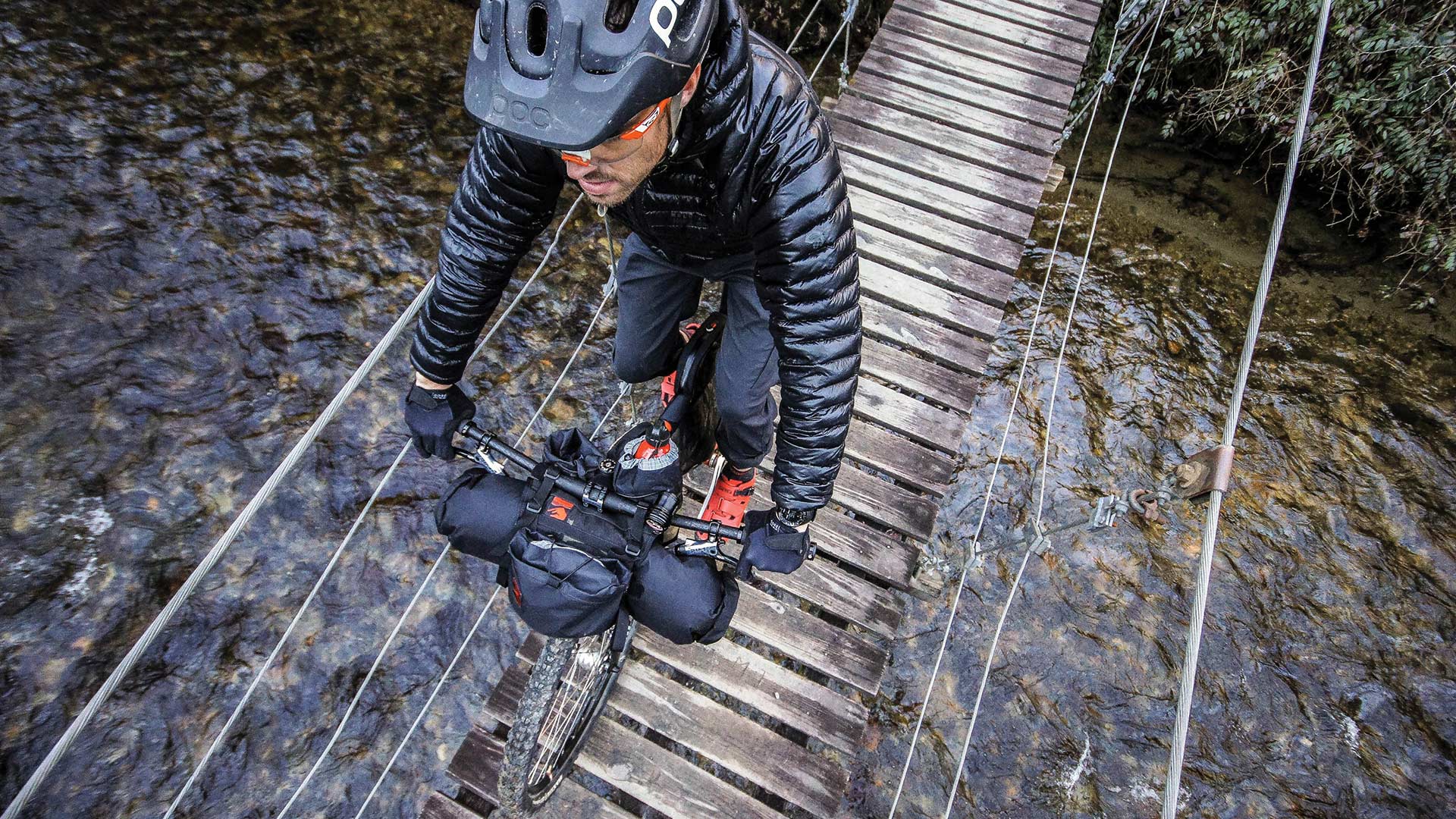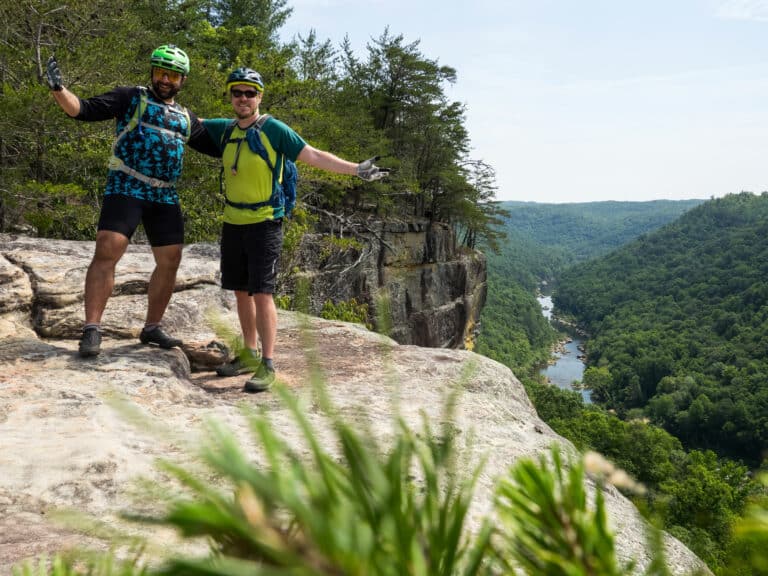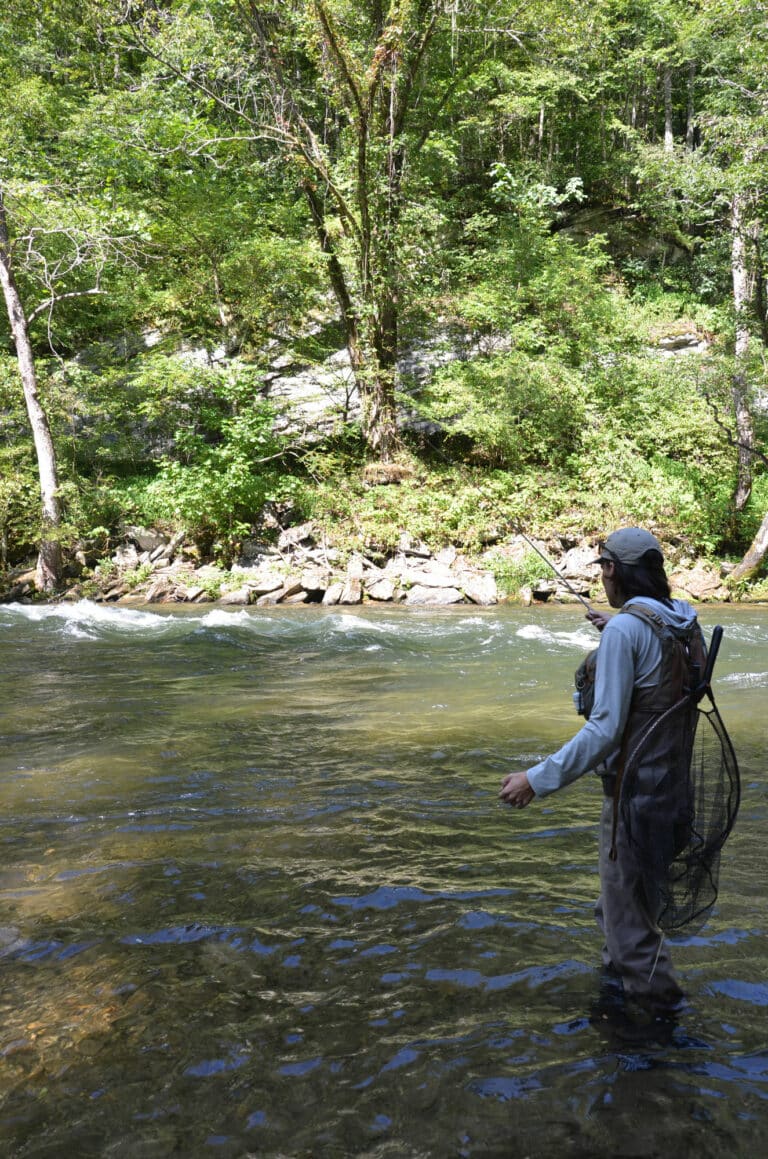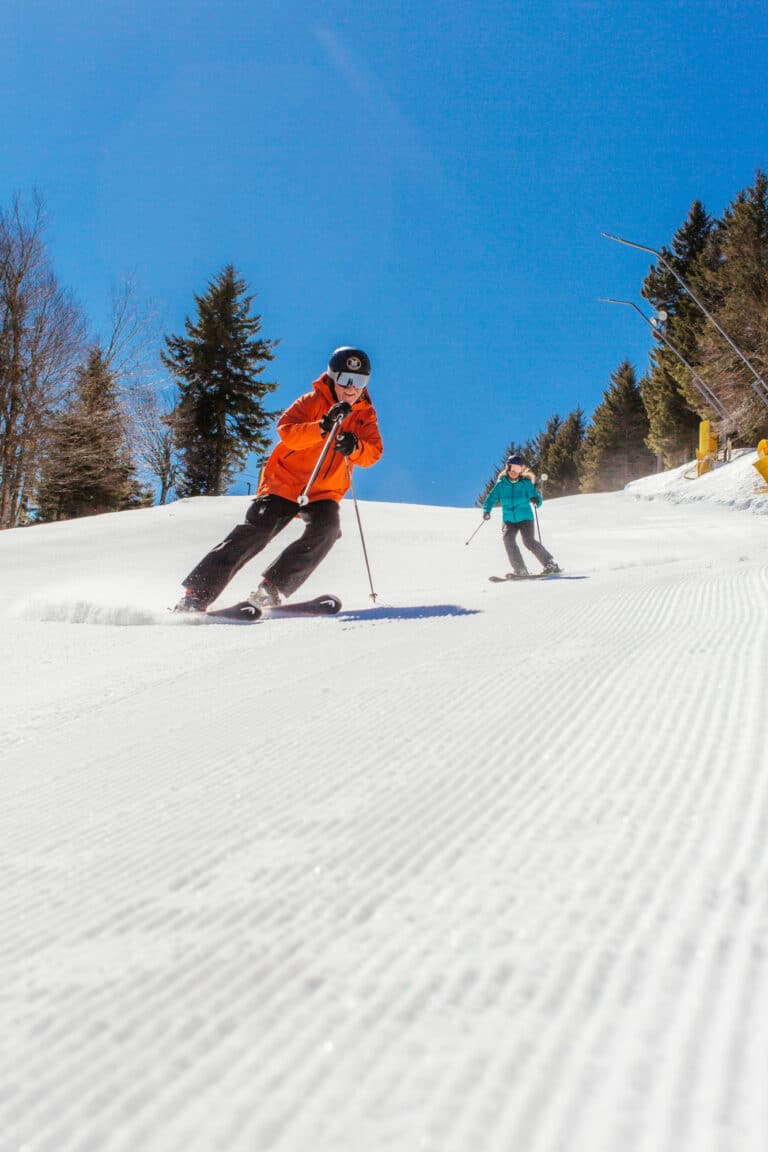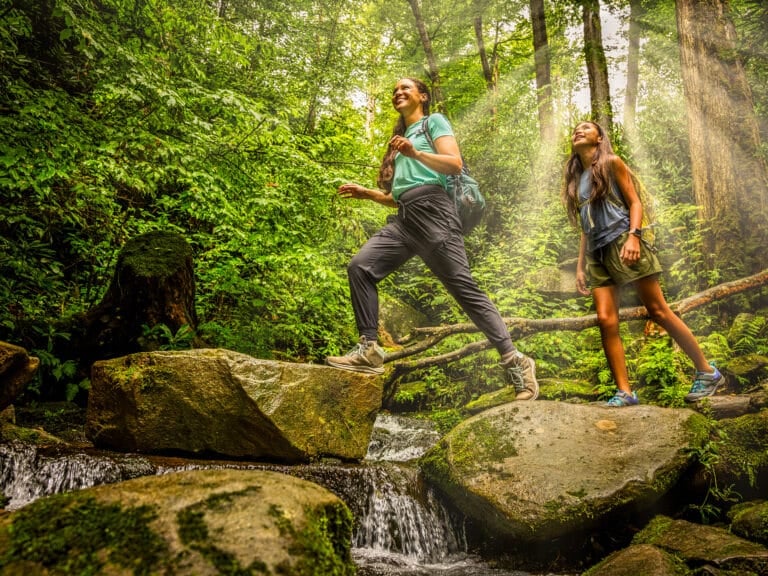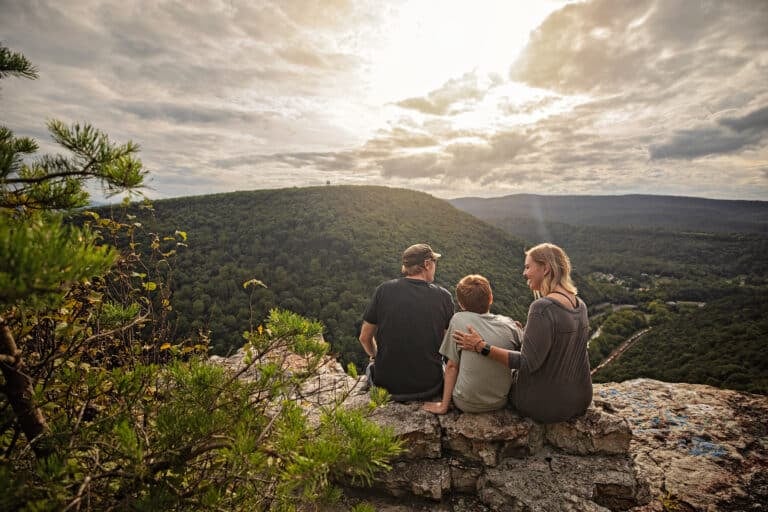There’s no entry fee, no support, no prize should you finish first, but for the growing niche of endurance bikepackers, that’s not the point.
The graveyard shift line cooks at the Texas Tavern in Roanoke, Va., might have mistaken Dave Williams for just another drunk the morning of April 12, 2018, had he been wearing anything other than black lycra tights and a matching jersey. It was 1 a.m. when Williams stumbled into the 24-hour 1930s era diner, weary, delusional, a shell of a human.
He didn’t look at the menu. He had known for four days, 16 hours, and 27 minutes exactly what he was going to order the moment he set foot in that restaurant. He wanted a cheesy western, and he’d ridden a damn long way to get it.
He plopped his saddle-sore bottom onto a red pleather stool, practically melting from the abundance of heat and light. The phone rang. A waiter handed it to Williams. On the other line was Rob Issem, organizer of RockStar, the 270-mile singletrack route that Williams had just ridden from Harrisonburg to Roanoke, Va.
“Congratulations!” Issem said. “You’re the second person to finish. Everyone else has quit.”
And that was it. There was no formal finish line, no finisher’s medal, no podium or cheering crowd. Williams ate his cheesy western in silence, fought every fiber of his being to not fall asleep on that red pleather stool, and eventually plopped into a bed at 2:30 in the morning. It would be five days before the next, and last, singletrack rider would arrive at the Tavern.
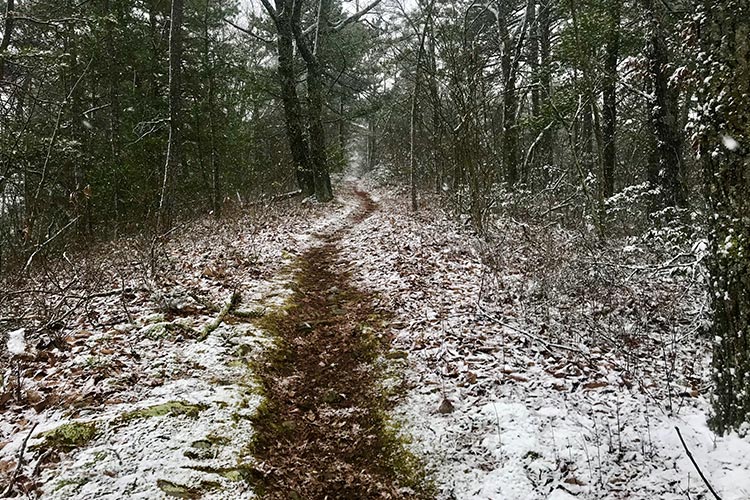
Digging Deep
The inaugural running of the RockStar was brutal in every sense of the word. During the days leading up to the April 7th grand depart, the pending forecast varied from 12 inches of snow to 50 degrees and sunny. Seven of the 34 registered riders didn’t even try to start, and over the course of the first 24 hours, two-thirds of the grand depart bailed.
“We all knew this was a ridiculously stout ride,” says Issem, who rode the 165-mile paved version of the course. “Even the gravel route (250 miles) is really more of a doubletrack mountain bike route. Still, we maybe would have had double or triple the people that were there on that Saturday morning if the weather had been something else, but the forecast added this extreme level of challenge to an already extremely challenging undertaking.”
Over the course of 270 miles, riders climb more than 41,000 feet along some of Virginia’s steepest and most technical terrain. Singletrack gems like Lookout Mountain, Hankey Mountain, Fore Mountain and North Mountain feel like cruel punishments when stacked back to back to back. Even in perfect conditions, the route is a true test of perseverance.
Throw two snowstorms in the mix and it’s not even an adventure anymore. It’s an epic.
Barry Croker is a big fan of that word. The Manassas-based active duty Air Force Captain has been racing mountain bikes since the ‘90s, eventually finding his home in the National Ultra Endurance series and the 100-miler movement. In his world, the bigger a challenge, the better.
Croker’s one of only a handful of mountain bikers to have successfully ridden The Ring, a grueling 66-mile loop along the Massanutten Mountain range that humbles even the strongest of Virginia’s riders. When Croker saw Issem’s post promoting this 270-mile singletrack event, there was no question that he’d be putting rubber to trail come April.
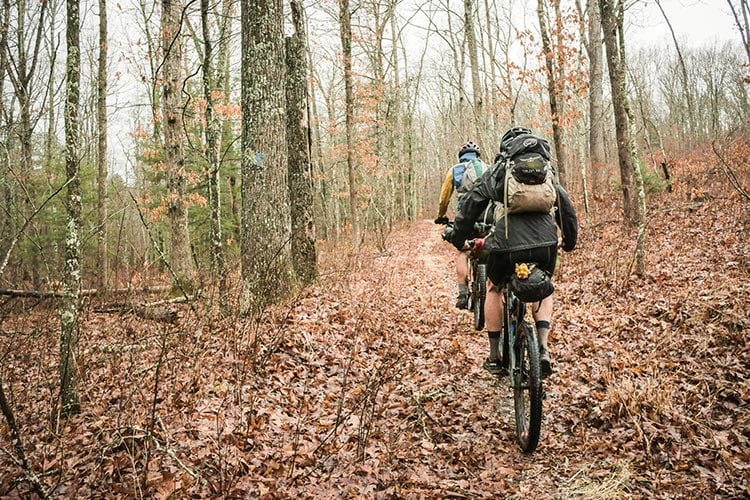
“The Ring was like a 17- or 18- hour ride, so I thought maybe it would be just a little longer with a little camping thrown in there,” says Croker. “I didn’t realize that it’s not just riding. There’s logistics, route finding, sleeping on the ground with a bivy sack, finding food and water. All of that is a huge part that I underestimated, and I think a lot of people underestimated, too, especially when the conditions deteriorated.”
The first night of the RockStar, it snowed three inches. The next day, temperatures soared back up into the 50s with blue skies and sun to boot. The snow melted entirely. But at 4 a.m. the morning of day three, it started snowing again, and harder this time.
Croker, who felt the first flakes on his face, quickly mobilized and packed up. The snow was falling in heavy sheets and accumulating an inch an hour. By mid morning, the trail had entirely disappeared beneath six inches of snow. Croker was forced to push his fully loaded 50-pound bike uphill for miles on end. His 5 miles-per-hour pace slowed to a mere crawl. When he arrived in Covington 8 hours later, having covered just 20 miles, he was ready to call it quits.
“Really going over Fore Mountain, I was totally demoralized, like what am I doing with my life, why do I ride bikes anymore. I was ready to pull the plug then, like I’m done, but I couldn’t be done because I was in the middle of nowhere in the snow. I still had to get out.”
Some 30 miles north of Covington atop Bald Knob near the Ingalls Airport, Dave Williams was desperately trying to thaw his frozen limbs while waiting out the worst of the storm. Hunkered in his $20 emergency tent from Walmart with 20mph winds whipping at the paper-thin walls, Williams forced himself to eat and drink and to not think about how dire a state he was in.
“That was bad, bad news. I’ve never been in a situation like that where if I made the wrong decision, I could have died.”
He was able to rally, but the final slog into Douthat State Park, the halfway point on the route, practically broke him. Williams’ hands and feet were completely numb. The few times he was able to ride, he had to visually confirm that his fingers were indeed on the brakes because he couldn’t judge from feeling alone. Mostly though, he was shuffling along beside his bike, not riding it.
“In the snow, climbing 800 feet felt like going up Everest,” he says. “You’re pushing two feet forward, holding the brakes down, using that to get you up, like an old man with a walker. It took forever.”
When Williams finally descended into Douthat, the park’s restaurant was already closed. An employee gave him coffee and parked him by a space heater. After two hours, Williams started to regain feeling in his limbs.
And herein lies the crux of RockStar, both for Croker, who holed up in a hotel for the night, and Williams, who could have easily stayed with his toes stuck in a heater for the rest of eternity. Do you quit or, in the words of Jack Kerouac, “climb that goddamn mountain?”
Williams, sensing the call of the siren, suited up and hit the trail that night, descending down below the snow line to make camp. The next day was forecasted to be warm and sunny. Croker pressed on in the morning, covering an impressive 110 miles up and over Price Mountain, the Dragon’s Back, Carvins Cove, and the Mill Mountain Star in 18 hours to become the first rider ever to complete the RockStar trail route.
One day and a couple of sleep-deprived wrong turns later, Williams finished his own journey. Even a week after the RockStar ended, he still had not regained the feeling in his toes.
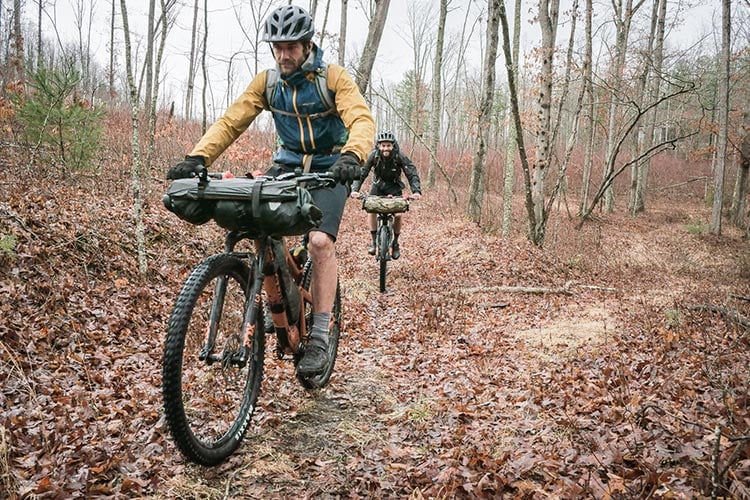
The Journey is the Destination
Within the past five years, a growing number of cyclists like Croker and Williams have been ditching the rules and red tape of sanctioned stacked loop cross-country races for the challenge and adventure of grassroots ultra endurance events.
Inspired by the 2010 release of the documentary on the Tour Divide, a 2,700-mile mostly gravel route extending from Banff, Canada, to the New Mexico–Mexico border, Chris Tompkins of Danville, Va., concocted his own mini Tour Divide using the Adventure Cycling Association (ACA) Allegheny Mountains Loop.
The 408-mile loop, which begins in Blacksburg, Va., and dips over the West Virginia line before circling back, takes riders through some of the most remote and rugged parts of the Virginias. Piecing together gravel roads, rail-trails like the West Fork Trail and Greenbrier River Trail, and secondary roads, the route packs in over 32,000 feet of climbing. In 2012, Tompkins had 17 riders at the start of the AML400. Only 9 finished that year and in every subsequent year since, the scratch rate has held fast around 50% to 70%. Despite the shutdowns, the interest keeps building, and the riders keep coming.
“There’s an extra added investment of your time and your energy into an event like that because you do know it’s all on you if things go south,” says Tompkins. “The camaraderie of all the participants is second to none. Everybody is pulling for everybody. They all know that you just showing up and having the courage to toe the line means that you have invested a tremendous amount of heart into the goal of finishing and there is so much respect for that.”
Kim Murrell of Ocoee, Tenn., is not one for the pomp and circumstance of a grand depart. Since becoming the first woman to finish the Florida Divide (850-1,500 miles, depending on your route) back in 2015, Murrell has continually set out on her bike, sometimes without much more than a day’s notice, to crush independent time trials (ITTs) on her own terms, solo, and unsupported.
“I’m a bit of a winger,” she says. “I’m not a researcher. I’m not stupid about it either, but I don’t want to know. I’m not the person who is going to have a cue sheet written up for every mile. I’m not going to know where every hotel or gas station is. I just download the [GPX] file and then be surprised.”
It seems appropriate, then, that Murrell’s bikepacking events (chilhoweeoutdoors.com) —the Dirty 130, Death March Revival, and the Vista 300/Mountain 420—are surprising, as in, surprisingly hard. The Vista 300/Mountain 420, which begins in Reliance, Tenn., and crosses into Georgia before heading back north, crams in over 35,000 feet on the 300-miler and 47,000 feet on the 420-miler. Earlier this spring, the first grand depart for the routes brought out over 40 riders from all over the country.
For Murrell, the explosion in interest seems like a natural progression of the industry. Bikes, gear, the riders, all of that changes over time. If there’s anything the bikepacking movement has proven, it’s that cyclists are seeking more on the bike, and long-distance self-supported events are providing that platform.
“These events have created that outlet for people that need some kind of structure still but want to get out and push themselves,” she says. “It’s unique in that one minute you can be bonking and the next you’re riding with a person who just caught up to you and you ride together for three days and finish best friends from sharing that experience.”
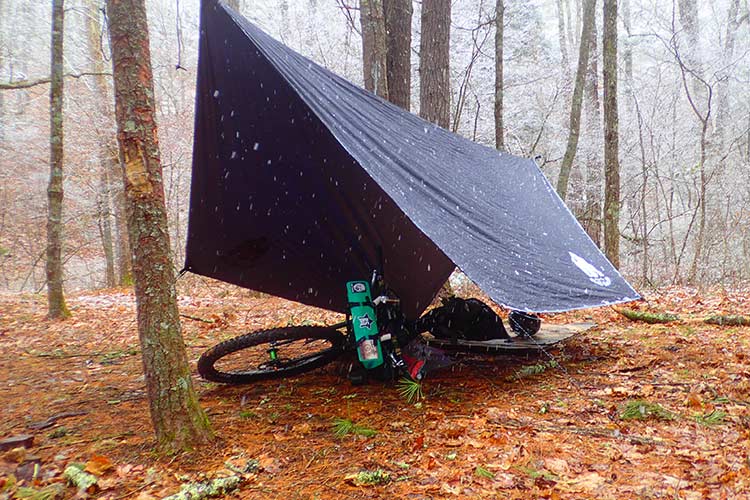
Chris Coleman of Fredericksburg, Va., got a little taste of that camaraderie on his ITT of the RockStar gravel route, which he started only a day before the grand depart. Coleman finished the 250 miles in 57.5 hours, posting up comfortably in the Texas Tavern well before the start of that second snowstorm.
Even with the early start, Coleman was surprised to feel so much support from fellow riders. Compared to the cross-country races he’d competed in near his hometown, he said the overall vibe was incredibly welcoming. As a cyclist with just over a year’s time on the bike, he really appreciated that.
“Those cross-country races are super competitive because you’re just sprinting all out but doing an endurance race is so different,” he says. “It turns from racing the guy in front of me to racing myself. It’s all about learning how to pace myself really slowly and it’s a different mental strategy. It’s almost like you’re not even racing. It’s almost like a social ride. Everyone’s just out there to see what they can do rather than racing each other so much.”
Travis Jones of Blacksburg, Va., proved a lot to himself during his own RockStar experience. Though it took him over eight days to complete it, Jones is only the third rider to finish the RockStar trail route from start to finish. When everyone else bailed, Jones stuck it out, even when it meant staying put at camp for an entire day by himself in the middle of a blizzard.
Prior to RockStar, Jones had never ridden more than 45 miles in a day, and that was, as he put it, on “freaking gravel granny trails.” On singletrack, he hadn’t ridden much more than 20 miles in a given ride. To take on a consecutive week of 35-40-mile days was new territory for Jones, and he loved every minute of it.
“That feeling of freedom and adventure and just exhilaration knowing that it was nothing but the open road, it was such a great feeling,” he says. “I literally had withdrawals two days after the event when I was thrown back into reality. I’m definitely going to do it again.”
It’s that accessibility that Greg Hardy, owner of the Asheville-based bikepacking bag manufacturer RockGeist, hopes to see more of in the years to come. Hardy, who has raced the Arizona Trail Race 300 three times and the 750 once, says he knows from personal experience what it’s like to be a curious novice on the other side of the fence with a lot of questions, a lot of stoke, but not a lot of experience.
“The barrier to entry I think is high,” he says. “A lot of these perceived notions of what bikepacking is seem very romantic, and while that can be true, that can also be overwhelming for beginners. In reality, all it takes is a 15-mile route out your backdoor and some drybags and you’re ready to roll, but that’s not often how it’s portrayed.”
Hardy hopes to enable more riders to get out there and experiment by offering a bag rental program at three locations—Mulberry Gap in Georgia, his brick and mortar shop in Asheville, and Bluestone Bike & Run in Harrisonburg, Va. For $60, riders with a naked bike can rent all of the bags they’ll need for a weekend trip without ever having to make that pricey financial investment up front.
“There’s no doubt these rides are definitely challenging, but the hard times always have that pendulum swing and provide these awesome moments as well. The first time I did the Arizona Trail Race, it took me five and a half days, but for me, it wasn’t about coming in first or last, because I probably did come in last. I finished it, and that’s what was important to me.”
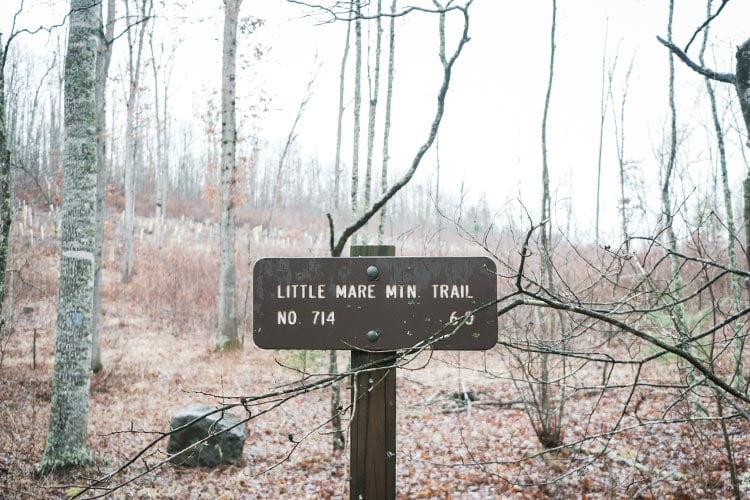
Beyond the Bike
Attendance for this year’s Trans North Georgia Adventure (TNGA), a 350-mile mostly singletrack route traversing the North Georgia mountains, is expected to be at an all-time high. As of May 2018, 225 people had signed up. That’s 100 more than the Forest Service permit of 125 starters. For the first time ever, the grand depart has a waiting list.
Between the growing popularity of the TNGA and the Cohutta Cat 300, a roughly 300-mile figure-8 in northern Georgia and eastern Tennessee, Mulberry Gap Mountain Bike Get-A-Way co-owner Kate Gates says bikepacking specifically is becoming a big boon to the local economy.
“These races bring people from all over the country to mostly rural areas where small mom and pop type businesses get fully involved in supporting the racers as they come through,” she says. “Many extend their store hours and become obsessed with watching blue dots on Trackleaders make their way through the course. Most of these people have no idea what mountain biking entails but can see the struggle that the racers go through and are so happy to help in any way possible. These events also give a new source of revenue for local shops, restaurants, and lodging facilities.”
Back in Virginia, riders attempting the RockStar certainly supported local businesses and lodging providers, but the racers’ biggest contribution to the area happened long before the grand depart. Though organizer Rob Issem technically didn’t charge a fee for entry, he did require participants to either contribute $100 to a local trail organization or volunteer a minimum of 10 hours of trail work on the route.
Because the route connects lesser-traveled pieces of singletrack in the George Washington and Jefferson National Forests, Issem says the trail maintenance hours logged by RockStar riders helps not just the event but the Virginia cycling community at large.
“There are some beautiful, beautiful sections like Shenandoah Mountain Trail and Little Mare, but they don’t see all of the traffic that a trail like Lookout gets,” he says. “They’re just more remote. The problem is they receive such little traffic that there’s almost a danger of them not being viable trail systems if we don’t do something. We realized by connecting them up and riding them, just how much good we could do with an event like this.”
